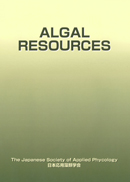Volume 8, Issue 1
Displaying 1-7 of 7 articles from this issue
- |<
- <
- 1
- >
- >|
-
2015Volume 8Issue 1 Pages 1-10
Published: 2015
Released on J-STAGE: January 15, 2020
Download PDF (1194K) -
2015Volume 8Issue 1 Pages 11-22
Published: 2015
Released on J-STAGE: January 15, 2020
Download PDF (1493K) -
2015Volume 8Issue 1 Pages 23-36
Published: 2015
Released on J-STAGE: January 15, 2020
Download PDF (1932K) -
2015Volume 8Issue 1 Pages 37-53
Published: 2015
Released on J-STAGE: January 15, 2020
Download PDF (4196K) -
2015Volume 8Issue 1 Pages 55-57
Published: 2015
Released on J-STAGE: January 15, 2020
Download PDF (1052K) -
2015Volume 8Issue 1 Pages 59-64
Published: 2015
Released on J-STAGE: January 15, 2020
Download PDF (1394K) -
2015Volume 8Issue 1 Pages 65-69
Published: 2015
Released on J-STAGE: January 15, 2020
Download PDF (1386K)
- |<
- <
- 1
- >
- >|
